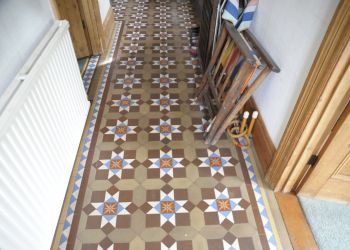Energy Efficiency and Historic Buildings: How to Improve Energy Efficiency
The government have just released a wave of new initiatives aimed at insulating homes and making homes more energy efficient. If you live in a traditional building and like living in a mould and damp free environment, dont be fooled into doing anything. All of the major industry bodies have advised the government against this but for some reason they feel they know better. Believe me, most problems in old homes are down to poor maintenance and bad advice.
We thought we could help give some helpul, generally cheap tips that home owners might find useful below.
Deal with the source of damp problems: Seems obvious we know but how many times do you hear people say, ive just paid 15k on damp proofing! What did they do? They covered it up with cement……. So they havent deal with the problem just made it look pretty for a few years. If you are having problems, deal with the source. If you dont know the source. Call us.Our damp surveys start at around £600.00 dependant on the type and comlexity of your property. £600.00 to identify the cause has to be better then thousands on pointless chemicals?
Carry out regular maintenance: Clean your gutters and downpipes twice a year minimum! when was the last time you did it? If you don’t like heights pay someone to do it. Overflowing or faulty rainwater goods are one of the primary causes of damp and decay in properties.
Close curtains and shutters: Ever seen pictures of old houses? Big hideous curtains down to the floor? They weren’t stupid, bad taste maybe but certainly not stupid.
Replace old lightbulbs: Again seems basic but you can save up to a third on your electricity bill by switching to energy efficient light fittings.
Install “A” rated appliances: Have a look at the info sheet. Its worth while paying a bit extra as you will pocket that money back in a few years through cost savings.
Draughtproof doors and windows: Overhaul old windows, make them efficient. Make them work properly and fix any broken parts.
Insulate roof space and pipes: Its no secret that we lose a great deal of heat through uninsulated roof spaces, but using the wrong type can be equally as inefficient. Wrap those pipes up, the water tank, make it easier to retain heat and you’ll save £££ and time.
Put a jumper on: It is recommended that you should keep your home heated at around 15 degrees continuously to ensure moisture does not settle within the fabric of your building leading to dam issues. 15 is a bit low for my daughters I must admit so what do I tell them? Get a jumper on and keep it on. Think of the cost savings? Keeps the windows open a little bit get some ventilation in. Trust me it will change your life.
According to English Heritage, the most important factors affecting a building’s energy use in operation are:
1) Building location and orientation – The performance of a building envelope will be affected by regional variations in climate and its exposure to wind, rain and sun.
2) Building fabric – The form and design of the building envelope and the physical properties (and condition) of the construction materials and components also affect performance.
3) Building services and equipment Heating, cooling, lighting and ventilating a building all use energy – Energy is also consumed by equipment and appliances employed for business, cooking and entertainment.
4) People Occupants use their buildings in different ways – The amount of energy they use varies too. The number of people in a building, the levels of comfort they expect, and the technical services and equipment they require all have a significant effect on how much energy is consumed. To understand the energy performance in a building – and identify opportunities for improvements – it is important to view it holistically as an interactive system.
Well there you go, some simple and generally low value advice brought to you by Smith Heritage Surveyors.
